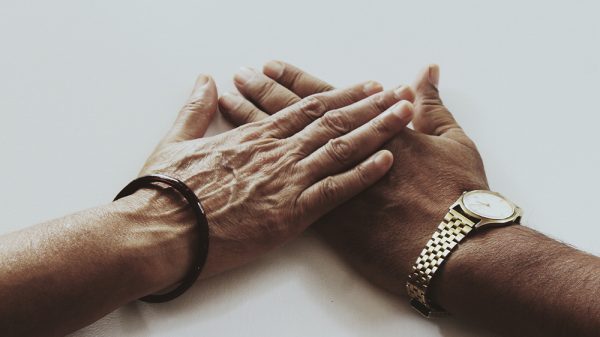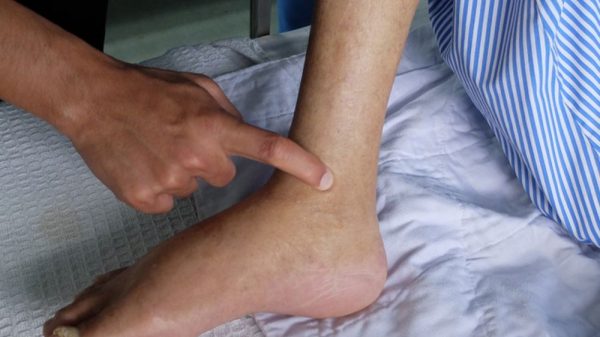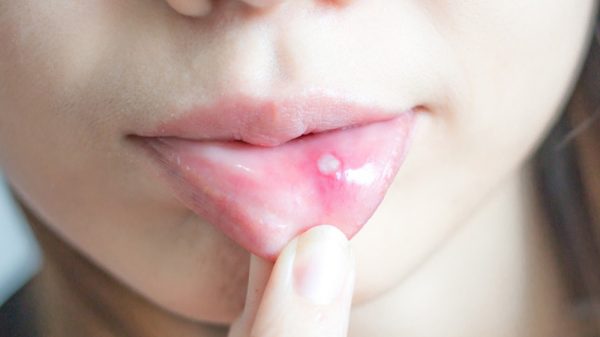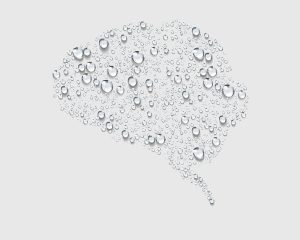Edema in the lower extremities is a condition that accompanies a myriad of conditions ranging from heart failure to liver disease. A common complication of swelling is legs that leak excess fluid. Fluid leaking from legs can be burdensome and frustrating and interfere significantly with your daily life. If you are living with fluid leaking from your legs, know that you are not alone and there are ways to manage it.
Keep reading to find out tips and strategies for how to stop fluid leaking from legs.
What Does It Mean to Have Leaking Legs?
Fluid leaking from the legs often looks like an oozing wound or weeping wounds over large areas of the legs. Because leaking legs are almost always paired with edema, the condition is often referred to as weeping edema. Peripheral edema is the specific form of edema that is associated with fluid leaking from the legs since peripheral edema most commonly impacts the lower limbs.
The edema may be described as either pitting or non-pitting. In the case of pitting edema, applying pressure to the affected area will leave an indentation. On the other hand, applying pressure to an area affected by non-pitting edema will not leave an indentation.
When the legs are chronically swollen, the extra fluid chronically puts pressure on all tissues, including the skin. The chronic pressure triggers an inflammatory response in the legs, which can cause breakages in the skin where fluid leaks out.
Risk Factors and Causes of Fluid Leaking from Legs
Fluid leaking from legs is almost always co-occurring with swelling and edema. Underlying causes for leaking legs include:
- Congestive heart failure: Congestive heart failure is most common in older adults, and occurs when the heart muscle is unable to effectively pump blood throughout the body. Stiff arteries and veins also commonly occur with congestive heart failure, contributing to blood pooling in the legs. Congestive heart failure can also result in pulmonary edema.
- Blood clots: Blood clots result from the conglomeration of red blood cells to form a small blockage. The most common type of blood clot is deep vein thrombosis, which usually forms in the lower legs. Without treatment, a blood clot can cause significant swelling. If you think you may have a blood clot, it is critical to get immediate medical attention. Blood clots can be life-threatening if they dislodge and travel to your lungs or heart.
- Lymphedema: Lymphedema describes the chronic accumulation of fluid of the extremities, and commonly affects the legs or arms. Damage to the lymphatic system from cancer treatments is a common cause of lymphedema. Breast cancer patients commonly experience lymphedema in the arms, since undergoing a mastectomy often requires removal of the lymph nodes that are present in the armpits. However, obesity is also a common cause of lymphedema and swelling in the legs.
- Kidney disease: Chronic kidney disease causes the kidneys to be less efficient when filtering sodium and fluids out of the body. As a result, the body holds on to a lot of excess salt and fluid, causing the legs to swell.
- Chronic venous insufficiency: Fluid leaking from your legs may indicate that there is an issue with blood vessel function in the circulatory system. Venous insufficiency means that the valves in the veins do not work well enough to pump blood back towards the heart. This can cause blood to pool in the legs, subsequently causing swelling. Chronic venous insufficiency tends to be more common in older adults.
- Cellulitis: Cellulitis is an infectious skin condition that often develops with edema. In many cases of edema, the lymphatic system is unable to effectively circulate immune system agents through the body to fight infection, which significantly increases the risk of infection. Skin infection can ensue, and the infection may persist for much longer than normal because the immune system is unable to properly access it.
- Liver disease: Liver disease that has progressed to cirrhosis can cause swelling in the abdominal area as well as the legs. When the liver is affected by cirrhosis, it is unable to efficiently detoxify the blood and also may produce an inadequate supply of proteins like albumin. The result is fluid retention and swelling.
- Anasarca: Anasarca describes swelling that impacts the entire body, not only the legs. Individuals with heart disease, kidney disease, or liver disease are at a greater risk for developing anasarca.
Treating the Underlying Condition
If you have swelling in your legs and leaking, it’s critical to first go to the doctor. Undergoing an examination and testing and receiving a diagnosis is crucial for making sure that you’ve pinpointed the underlying cause. Knowing why your legs are swelling is important for making sure that you are effectively managing the disorder. Always talk to your doctor and follow guidelines for recommended treatment.
Strategies for How to Stop Fluid Leaking from Legs
Here we go through helpful tips for how to manage fluid leaking from the legs. Most strategies are helpful regardless of the underlying cause of edema and subsequent leaking. However, make sure to always get all of your treatment strategies approved by your doctor and always follow all recommended guidelines.
1. Eating Fruits and Vegetables
Eating plenty of fruits and vegetables is a critical part of helping your body fight edema and subsequent leaking from the legs. Fruits and vegetables are rich in vitamins, minerals, and antioxidants that help fight inflammation. Increasing your intake of fruits and vegetables is associated with helping to mitigate and manage a number of inflammatory diseases such as heart disease and fatty liver disease.
The micronutrients present in fruits and veggies strengthen the immune system and help all of your cells operate more effectively and efficiently. Consuming an overall anti-inflammatory diet is key for facilitating the healing of chronic wounds on your legs and mitigating swelling associated with edema.
2. Compression Garments
Compression garments are an important part of the treatment plan for mitigating leaking legs. Compression garments do exactly what their name suggests: they compress the limbs and force fluids up towards the heart, and encourage circulation. Your doctor, a physical therapist, or a lymphedema therapist can help guide you on the best kind of compression garments to wear for your needs. Compression stockings and compression bandages are the most common type of compression garments.
3. Skin Care
Skin care and wound care go hand-in-hand when managing excess fluid leaking from the legs, since sores and blisters may develop as a result of edema. When an individual is suffering from leaking legs, keeping the area clean and bandaged is crucial. Absorbent bandages can be very helpful for controlling the leaking and making daily life manageable.
In some cases, applying cream or lotion may help form a protective barrier between the skin and the air, and can help the skin heal.
4. Elevating Legs
Elevating your legs whenever possible is helpful for encouraging lymph fluid and blood to flow back towards the heart. Gravity is a powerful force, and sitting or standing for long periods of time can trap blood and fluid in the legs and worsen swelling. Elevating your legs above your chest whenever possible helps get rid of fluid retention in the legs, and therefore reducing fluid leaks from the skin.
5. Eating Plenty of Protein
Getting enough protein is critical when you have lymphedema that’s causing leg swelling. Protein is packed with essential amino acids, which the body requires on a daily basis to support connective tissues throughout the body and to replace muscle tissue. Eating plenty of dietary protein is critical for supporting the rebuilding of soft tissues, including the skin. Protein can be particularly beneficial for reducing leaking by supporting the renewal of skin that is inflamed and broken.
There is one caveat when it comes to protein consumption. If you suffer from liver disease or kidney disease, eating large quantities of meat and dairy for protein is very hard on the system. Liver cirrhosis or late-stage kidney disease makes the liver and kidneys less able to process the protein from animal products. Eating primarily plant protein is a great strategy for getting enough protein without taxing your liver and kidneys. Just be sure to consume a variety of plant-based proteins in a day, including foods like nuts, seeds, beans, and whole grains. Alternatively, taking a high-quality essential amino acid supplement is an excellent way to make sure you’re getting the balance of essential amino acids that you need, without added stress on your system. Before taking any supplements, always check with your doctor to ensure that they are safe for your specific conditions.
6. Avoiding Saturated Fat
Saturated fat is a major cause of inflammation and can be found in dairy and meat. The inflammation leads to the consumption of saturated fat may worsen fluid buildup and exacerbate leaking in the legs. Additionally, high saturated fat intake for a prolonged period of time is connected to circulatory conditions. In particular, saturated fat consumption is linked to high cholesterol levels, atherosclerosis, and heart attack. If heart failure is an underlying cause of weeping legs, you may benefit greatly from cutting out saturated fat.
You can limit the amount of saturated fat in your diet by cutting out foods like whole milk, cream, butter, bacon, steak, and cheese.
7. Limiting Added Sugar and Refined Grains
Sugar and refined grains are significant causes of systemic inflammation. When we eat foods high in added sugars or refined grains, the body quickly digests these foods, causing blood sugar levels to skyrocket. Glucose circulating throughout the body increases levels of systemic inflammation, potentially worsening swelling and oozing.
To avoid added sugars and refined grains, stay away from items like cookies, cakes, pastries, and soda. It’s also important to avoid packaged food items like crackers, granola bars, breakfast cereals, and condiments, which tend to contain hidden sugars.
8. Cutting Down on Salt
Sodium is a major culprit when it comes to swelling in the legs. Consuming too much salt causes the body to retain fluid, which worsens lymphedema. Plus, chronically consuming too much sodium is linked to high blood pressure, which is a major risk factor for heart disease. Limiting your salt intake is an excellent way to reduce the strain on your heart while also reducing leg swelling.
How can you cut down on the sodium in your diet? Avoid foods that contain lots of sodium. Cheese, preserved meats, canned foods, and packaged foods are major foods that contribute to sodium intake in the American diet.
9. Manual Lymphatic Drainage
In some cases, manual lymphatic drainage techniques may be appropriate. Manual lymphatic drainage is a technique performed by certified lymphedema therapists that encourages excess fluid to flow back towards the heart. The therapist may also show you some strategies you can use at home to help reduce leg swelling and to help reverse excess fluid buildup in the legs.
Conclusion
If you have fluid leaking from your legs, you most likely also suffer from edema or swelling in the lower limbs. Drainage from the legs is a very uncomfortable symptom that can get in the way of your daily life. If you notice leaking from your legs, the first thing you should do is make an appointment with your doctor and determine the underlying cause. Treating the underlying cause of edema and leaking is the most important step. On top of that, adopting a skincare routine, bandaging the area, eating an anti-inflammatory diet, elevating the legs, and using compression garments are all useful strategies for reducing leakage from your legs. Consistently using these strategies can provide relief.
























